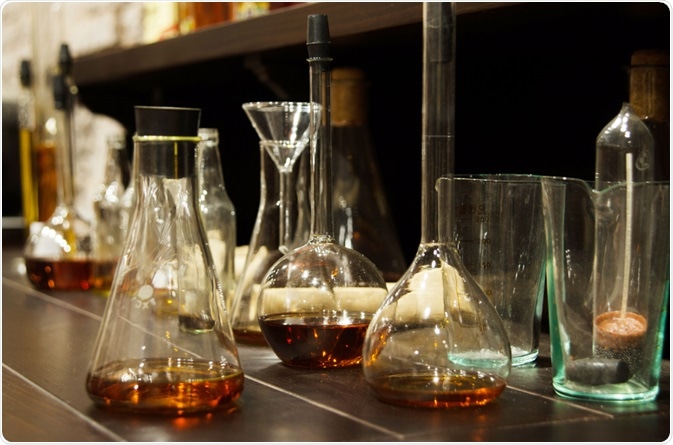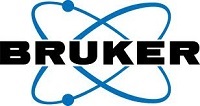The prevalence of intentional adulteration of consumables for financial gain has been increasing in recent years. Unscrupulous food manufacturers are intentionally deceiving customers by replacing the labelled product with cheaper alternatives to achieve higher profit margins.
With increasing prices of premium spirits, the rewards of counterfeiting branded spirits (which are frequently untaxed) can be high, and so it is a growing problem1. Last year, 50 million litres of counterfeit alcohol were seized by HMRC. Such fraudulent activity not only erodes the reputation of genuine suppliers, but also causes them financial losses as a result of reductions in sales and the need to spend more on making imitation more difficult, for example on special seals and holographic labels2. This in turn can jeopardise jobs.

© muh23/Shutterstock.com
Furthermore, in addition to consumers being deceived into paying premium prices for inferior products, their health is at stake as they unwittingly consume dangerous chemicals, such as methanol3. Fake spirits may include anti-freeze, cleaning fluid, charcoal and/or nail varnish remover, the consumption of which can lead to black outs, blurred vision, short-term sight loss and even death in extreme cases.
The International Federation of Spirits Producers Ltd has been established to combat the counterfeiting of distilled spirits across the world. In addition to supporting law enforcement and regulatory agencies, they are continually researching the latest technologies for beating the fraudsters.
Counterfeit alcohol
Counterfeit alcohol is a broad-reaching description encompassing a variety of fraudulent activities related to the retail of alcoholic beverages4. It includes the deception of clientele in bars and restaurants through the refilling of bottles of premium brand spirits with cheaper brands or by diluting the spirit with water. In many cases, however, the infringement is more serious. The spirit may not meet legal specifications regarding composition, eg, lack of additives, or inclusion of surrogate alcohols not intended for human consumption, or it may have intentionally falsified labelling, eg, cheap spirit labelled as a premium brand.
Counterfeiters frequently go to great lengths to make the bottle and labelling look extremely similar to the genuine product so the counterfeiting is not readily detected. More recently, as internet purchasing has become widespread, counterfeit spirits are openly marketed and bought by consumers lured by the significantly reduced price. However, the inclusion in some of these products of ingredients not included on the label may endanger public health..
Counterfeit alcohol is particularly prevalent in Russia5. In 2015 and 2016, methanol in counterfeit whisky killed 13 people in the Siberian city of Krasnoyarsk, but despite the known health risks demand for cheap spirits remains high.
Techniques for detecting alcohol fraud
Detection of counterfeit spirits is important to protect both economic stability and consumer health. A range of analytical methods have been employed to detect adulterated spirits. Conductivity testing has been used as a rapid test for fraudulent vodka trade since discount brands have significantly higher conductivities than premium products6.
Others include and various types of chromatography and UV/IR spectroscopy4. However, as counterfeiting is becoming more sophisticated it is becoming more and more difficult to reliably distinguish brand from counterfeit spirits using such simple traditional assessments. Consequently, authorities working towards the eradication of counterfeit alcohol have had to resort to superior analytical techniques, such as stable isotope ratio mass spectrometry or nuclear magnetic resonance (NMR) spectroscopy. With recent advances in the instrumentation for conducting such analyses, these are becoming more financially viable options.
NMR in spirit analysis
Non-targeted NMR analysis has been used to great effect in the authentication of food and drink7. Although NMR is a recognised tool for detecting the presence of harmful compounds, such as formic acid and methanol, in alcoholic beverages8, it has not been routinely used in the detection of counterfeit spirits.
As demonstrated in the detection of food fraud, 1H NMR fingerprinting offers a rapid means of checking whether a sample is authentic by comparing the NMR spectra with those of a known sample of a genuine product7.
NMR spectroscopy allows simultaneous identification and quantification of the components of complex mixtures with minimal sample preparation and without detriment to the sample.
A recent study investigated NMR authentication of spirit samples obtained in Russia and Kenya9. The samples were analysed by 1H NMR spectroscopy using a Bruker Avance 400 Ultrashield™ spectrometer equipped with a 5-mm SEI probe. Comparison of the spectra obtained with those of authentic products using linear regression analysis readily highlighted the six counterfeited samples9.
It is commonly believed (even among some experts) that consumers should be able to identify that a spirit is counterfeit by its taste. However, previous organoleptic studies of the discrimination of quality and counterfeit spirits have had varying results. Sensory analysis of the counterfeit samples in the aforementioned study revealed that assessors were unable to correctly identify the counterfeited product in the majority of cases9. Indeed, 61% of assessors preferred the counterfeit white rum to the authentic product.
The findings of this study illustrate that NMR spectroscopy is valuable tool for identifying counterfeit spirits and that taste cannot be relied upon as an effective means of discriminating between genuine and fraudulent alcoholic drinks.
References
- Forzley M. Counterfeit goods and the public’s health and safety. Intellectual Property Institute Report 2003, Washington, DC, USA.
- Haworth A, Simpson R. (2004). Moonshine markets: Issues in unrecorded alcohol beverage production and consumption. In R. Haworth, Alan, & Simpson (Vol. Eds.), Vol. 53. New York: Taylor & Francis. http://dx.doi.org/10.1017/CBO9781107415324.
- Kotelnikova Z. Alcoholism, Clinical and Experimental Research 2017;41(4):810–819.
- Lachenmeier DW. In Advances in food authenticity testing:565–578. 1st ed;G. Downey (Ed). Oxford, UK: WoodHead Publishing 2016.
- Neufeld M, et al. Addiction Research & Theory 2017;25(4):310–317.
- Lachenmeier DW, et al. Microchimica Acta 2008;160(1–2):283–289.
- Kuballa T, et al. Current Opinion in Food Science 2018;19:57‑62.
- Hausler T, et al. Proceedings of the XIII International Conference on the Applications of Magnetic Resonance in Food Science 2016:27–31). https://research.wur.nl/en/publications/proceedings-of-the-xiii-international-conference-on-the-applicati
- Kuballa T, et al. Food Chemistry 2018;245:112–118.
About Bruker BioSpin - NMR, EPR and Imaging

Bruker BioSpin offers the world's most comprehensive range of NMR and EPR spectroscopy and preclinical research tools. Bruker BioSpin develops, manufactures and supplies technology to research establishments, commercial enterprises and multi-national corporations across countless industries and fields of expertise.
Sponsored Content Policy: News-Medical.net publishes articles and related content that may be derived from sources where we have existing commercial relationships, provided such content adds value to the core editorial ethos of News-Medical.Net which is to educate and inform site visitors interested in medical research, science, medical devices and treatments.